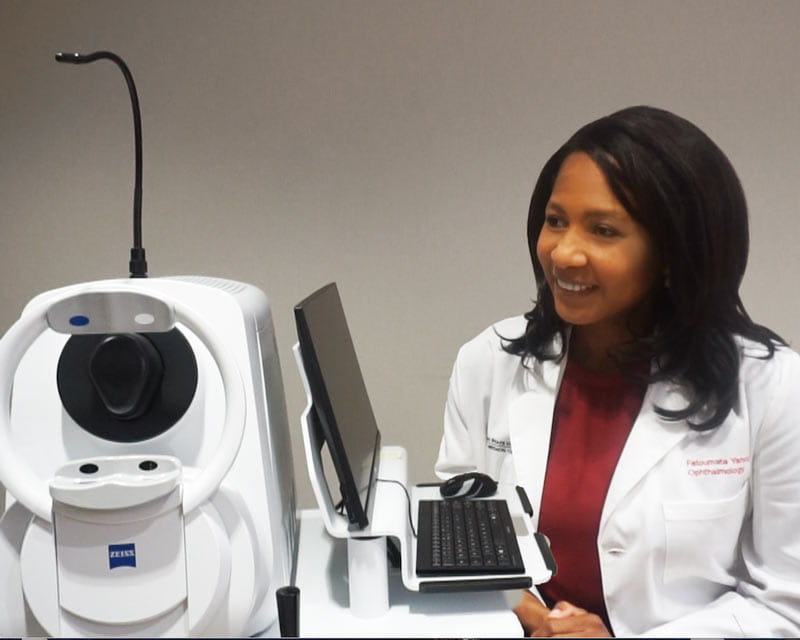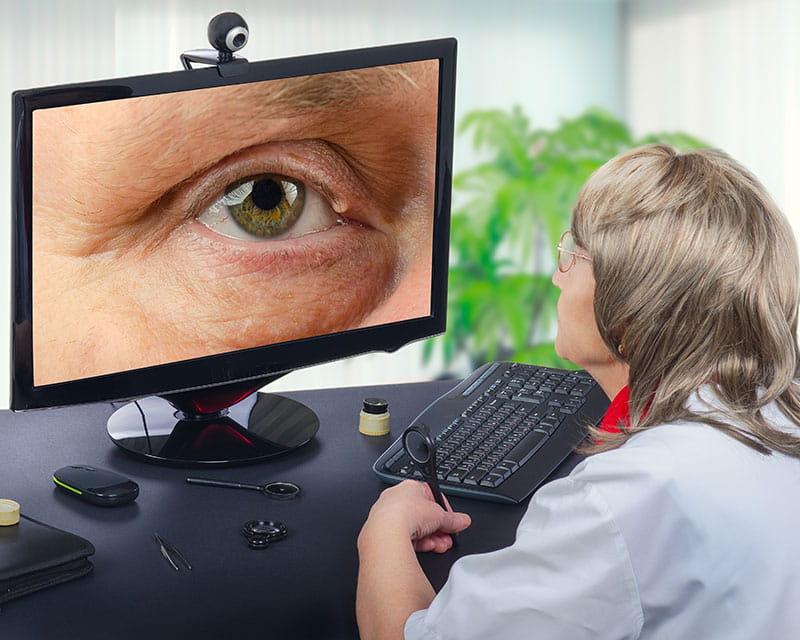
Swept-source OCT angiography reveals exquisite details of ocular structures
While her career has been focused on glaucoma and preventing glaucoma-related blindness, Sayoko Moroi, MD, PhD, has a diverse vision for the future of The Ohio State University’s Department of Ophthalmology and Visual Science.
Dr. Moroi comes to Ohio State from the University of Michigan, where she is the Jerome Jacobson Professor of Ophthalmology and Visual Sciences, chief of the Division of Glaucoma and director of the Glaucoma Fellowship.
While the department will continue to deliver high-quality care on-site, Dr. Moroi hopes to further develop Ohio State’s teleophthalmology program, which was launched by Matthew Ohr, MD.
“Teleophthalmology is an exciting field,” Dr. Moroi says. “It will be able to help us develop better strategies in preventing diabetes-related eye complications by giving us tools for early detection.”

With the teleophthalmology program, patients who may be diabetic or prediabetic can have their eyes evaluated by the Ohio State team without having to leave their primary care provider’s office. Instead of coming to an Ohio State eye clinic, the patients can have their eyes photographed during a regular primary care visit. The photographs are then sent to Ohio State for reading and interpretation, and if the patient shows signs of diabetes in the eye, he or she can follow up with Ohio State eye doctors.
In addition to improving access to care, Dr. Moroi says she hopes growing the teleophthalmology program will also educate patients about disease.
“I think the teleophthalmology will help patients be more aware of the consequences of uncontrolled diabetes and better motivate them to take healthier actions,” Dr. Moroi says.
When Dr. Moroi arrives at Ohio State in early 2020, she aims to expand ophthalmology research in the clinic as well as partner with other departments at Ohio State.
One of Dr. Moroi’s goals is to work together with the outstanding The Ohio State University’s otolaryngology team as well as its geriatrics team to develop a center that will focus on studying falls in older people. The goal is to gain a better understanding about the vision and hearing sensory aspects that cause falls, then develop prevention strategies.
Dr. Moroi is also planning to partner with Ohio State’s computer science and engineering teams to find better ways to collect data from eye exams and testing. She’s hoping this partnership will help her team implement artificial intelligence (AI) to interpret the data.
“There’s a lot of buzz around the use of technology and big data,” Dr. Moroi says. “It would be wonderful to work alongside our colleagues to learn how to harness and understand that data so that we can better diagnose disease at an earlier stage, determine disease progression and assess response to treatments.”
Aside from these goals, Dr. Moroi will be bringing a National Institutes of Health-funded grant to study physiological factors that influence eye pressure variation and treatment response in glaucoma patients. She also plans to launch a study to examine genetic factors in glaucoma patients to develop precision medicine strategies for treatment.